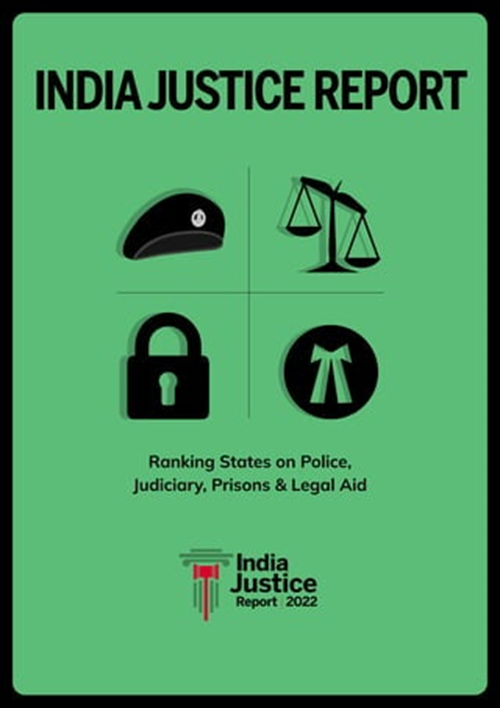THE BIAS THAT MUST GO
Syllabus:
GS 2:
- Role of women and women’s organization, population and associated issues, poverty and developmental issues, urbanization, their problems and their remedies.
Focus:
- India Justice Report (IJR) shed light on the wide gender gap persisting within police, judiciary, prisons, legal aid, and human rights commissions.
Source:- IE
Despite global acknowledgment of diversity as a cornerstone for effective institutions, the inclusion of women in crucial sectors like justice delivery remains critically low. As we commemorate Women’s Day, the stark realities presented by the latest India Justice Report (IJR) shed light on the wide gender gap persisting within police, judiciary, prisons, legal aid, and human rights commissions. This analysis delves into the multifaceted challenges hindering women’s progress in these areas and proposes actionable steps for fostering an inclusive environment.
| IJR
· IJR stands for India Justice Report. · Established in 2019 by Tata Trusts along with partners like Centre for Social Justice, Common Cause, and Commonwealth Human Rights Initiative. · It evaluates state performance in justice delivery. · Parameters include police, judiciary, prisons, and legal aid. · Aims to provide an overall assessment of each state’s justice system. |
The Current State of Gender Diversity
- The IJR highlights an alarming underrepresentation of women across all justice delivery subsystems, with a mere estimate of three lakh women employed in these sectors.
- Quotas have facilitated entry for women, yet their roles are predominantly confined to lower ranks. For example, while 35% of subordinate judges are women, this figure drastically falls to 13% in high courts and is even lower in the Supreme Court.
- The judiciary has seen only three women judges in the Supreme Court to date, with no woman ever holding the position of Chief Justice of India.
- The National Human Rights Commission (NHRC) and state commissions exhibit a similar lack of female leadership, indicating a broader systemic issue of gender imbalance.
- Despite targets to increase female representation in policing to 30%, women only constitute about 12% of the police force, with the majority in lower ranks.
- The narrative of “exceptional women” achieving high positions masks the underlying institutional reluctance to embrace gender diversity fully.
Deepening Gender Disparities: A Closer Look at Institutional Dynamics
- The entrenched preference for male dominance in career paths starkly disadvantages women, who often must prove their worth to an extraordinary degree merely to access similar opportunities for recognition and career advancement.
- Instances of women achieving high ranks within the justice system, such as Justice Ruma Pal and Kiran Bedi, are exceptions that highlight, rather than mitigate, the prevailing gender biases. These achievements, while notable, underscore the systemic barriers rather than signaling a shift towards inclusivity.
- Organizations frequently invoke operational challenges as reasons for the underrepresentation of women, including concerns over accommodating women’s unique requirements and ensuring their safety in the workplace.
- Such arguments obscure a deeper reluctance or unpreparedness to integrate gender diversity meaningfully, reflecting a lack of commitment to modifying existing structures to be more inclusive and supportive of women’s needs.
Charting the Path to Gender Equality in Justice Institutions
- Genuine gender parity transcends the mere establishment of quotas; it necessitates a thorough overhaul of existing procedures for hiring, retention, and promotion to root out ingrained biases.
- Leadership by example is crucial. Justice institutions must actively demonstrate their commitment to gender equality and equity, implementing tangible reforms to meet the distinct needs and circumstances of women effectively.
- Empirical research consistently shows that workforce diversity, notably gender diversity, significantly improves both the internal dynamics and the public image of organizations.
- A deliberate strategy is required to transcend tokenistic approaches to gender diversity. This includes adopting comprehensive equal opportunity policies that prevent any gender from exceeding 60% representation, thus ensuring a balanced and fair workplace.
- Justice administrators are tasked with a proactive role in transforming their organizations to embrace gender inclusivity fully. This includes adopting policies that encourage inclusive practices and actively discouraging discriminatory behaviors through clear consequences.
- By setting clear targets and employing both incentives for compliance and penalties for failures to meet gender diversity goals, institutions can gradually dismantle the prevailing mono-culture dominated by male perspectives and practices.
The challenges presented by the current gender imbalance in justice institutions are complex and multifaceted, rooted in longstanding cultural and structural biases. Addressing these issues head-on requires not only policy adjustments but a fundamental shift in institutional culture towards embracing and valuing diversity. By committing to comprehensive reforms and creating an environment that genuinely supports and encourages the participation of women at all levels, justice institutions can make significant strides towards achieving true gender equality. This transformation not only benefits women within the system but enhances the overall effectiveness, legitimacy, and public trust in these critical institutions.
Source:Indian Express
Mains Practice Question:
Analyse the impact of gender imbalance in the judiciary and other justice delivery institutions in India. Discuss the systemic biases and barriers to women’s inclusion and propose measures to ensure gender parity. Highlight the importance of a gender-diverse workforce in enhancing the effectiveness and public perception of these institutions. (250 marks)




